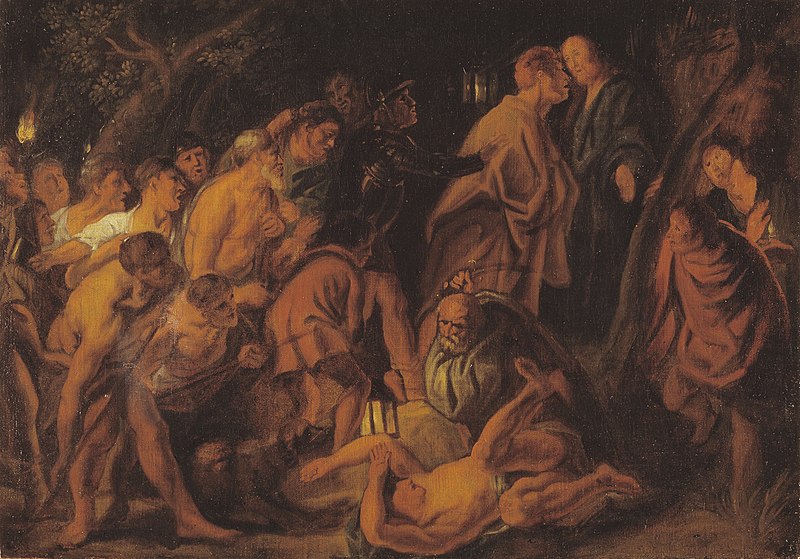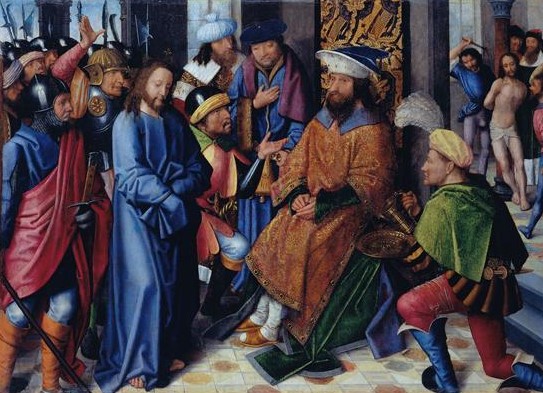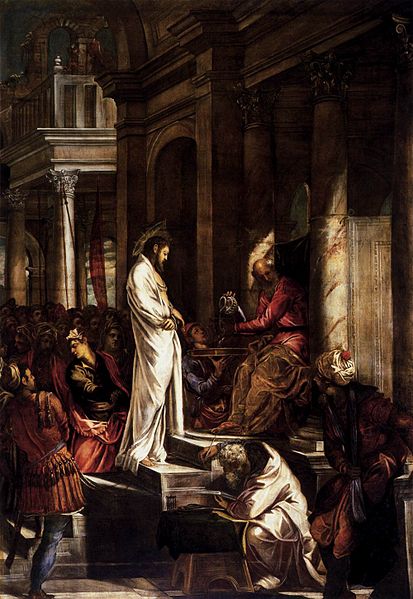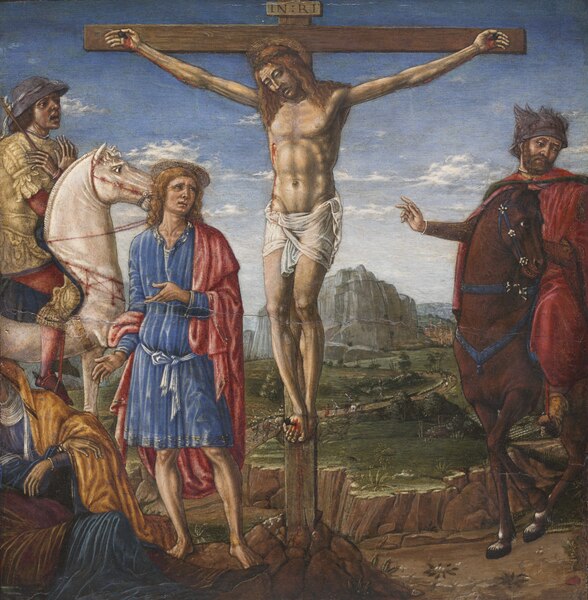The life of Jesus Christ, as chronicled in the New Testament of the Bible, is marked by a series of profound and transformative events, including trials, crucifixion, and resurrection.
These events hold immense significance in Christian theology and have had a profound impact on the course of human history.
In this exploration, we delve into the trials of Jesus, his crucifixion, and the pivotal moment of his resurrection, shedding light on their historical and spiritual importance. These events not only form the cornerstone of Christian faith but also offer timeless lessons and inspiration for people of various backgrounds and beliefs.
Let us embark on a journey through the trials and triumphs that continue to shape the faith and convictions of millions worldwide.
| Event | Date/Time | Details and Notes |
|---|---|---|
| Arrest in Gethsemane | Late Thursday night or Friday morning | Jesus is arrested in the Garden of Gethsemane. |
| First Trial: Before Annas | Brought before Annas, informal questioning. | |
| Second Trial: Before Caiaphas and the Sanhedrin | Formal trial before Caiaphas and the Sanhedrin. | |
| Peter’s Denial | Peter denies knowing Jesus three times. | |
| Third Trial: Before Pilate | Early Friday morning | Jesus stands before Pontius Pilate. |
| Fourth Trial: Before Herod Antipas | Herod questions Jesus and sends him back to Pilate. | |
| Fifth Trial: Final Trial Before Pilate | Pilate tries to release Jesus but condemns him due to crowd pressure. | |
| Crucifixion | Likely on a Friday | Jesus is crucified on a cross outside Jerusalem. |
| Death and Burial | Jesus dies on the cross and is buried in a tomb. | |
| Resurrection | Third day (Easter Sunday) | According to Christian belief, Jesus rises from the dead. |
Timeline of the Trials of Jesus
1. Arrest in Gethsemane
After the Last Supper, which took place during the Passover festival, Jesus and his disciples went to the Garden of Gethsemane to pray.
It was here that Judas Iscariot, one of Jesus’s disciples, betrayed him to the religious authorities by identifying him with a kiss. A group of soldiers and temple guards, sent by the chief priests and elders, arrived to arrest Jesus.
Also Read: Jesus Ministry Timeline
This moment marked the beginning of Jesus’s trials and his journey toward crucifixion. The arrest in Gethsemane is a significant event in Christian tradition as it represents the betrayal and the start of Jesus’s passion.

2. First Trial: Before Annas
Following his arrest in Gethsemane, Jesus was taken to the house of Annas, the former high priest and the father-in-law of Caiaphas, the current high priest.
This initial hearing with Annas was more of an informal questioning rather than a formal trial. Annas questioned Jesus about his disciples and his teachings.
Also Read: The Last Supper Facts
It’s worth noting that Annas held significant influence among the Jewish religious leaders and may have been involved in the initial stages of the proceedings against Jesus.
3. Second Trial: Before Caiaphas and the Sanhedrin
After being interrogated by Annas, Jesus was brought before Caiaphas, the high priest, and the Sanhedrin, the Jewish council composed of elders, chief priests, and scribes.
This was a more formal and official trial. False witnesses were brought forward to testify against Jesus, but their testimonies did not align.
Jesus was accused of blasphemy for claiming to be the Son of God, which the religious leaders viewed as a violation of Jewish law. The Sanhedrin found Jesus guilty of blasphemy, leading to his condemnation to death.
This verdict set the stage for Jesus’s subsequent trials before Roman authorities, as the Jewish leaders did not have the authority to carry out a death sentence under Roman rule.

4. Peter’s Denial
While Jesus was undergoing his trials, Peter, one of his closest disciples, was in the vicinity of the high priest’s courtyard.
As Jesus faced questioning and accusations, Peter was confronted by several people who recognized him as one of Jesus’s disciples. In fear and under pressure, Peter denied knowing Jesus three times, just as Jesus had predicted earlier.
This episode is significant because it demonstrates the emotional turmoil experienced by Jesus’s followers and Peter’s moment of weakness in denying his association with Jesus, fulfilling a prophecy made by Jesus.
5. Third Trial: Before Pilate
After Jesus’s trial before the Jewish authorities, he was taken to Pontius Pilate, the Roman governor of Judea. This marked the transition from Jewish religious trials to Roman legal proceedings.
The Jewish religious leaders accused Jesus of stirring up rebellion and opposing the payment of taxes to Caesar, hoping that these charges would lead to a Roman death sentence. Pilate questioned Jesus but found no basis for the charges.
He initially sought to release Jesus, possibly due to his lack of guilt, but he was pressured by the crowd, who demanded Jesus’s crucifixion. To maintain order and placate the crowd, Pilate reluctantly agreed to have Jesus crucified.

6. Fourth Trial: Before Herod Antipas
After Pilate realized that Jesus was from Galilee, he sought to avoid making a decision about Jesus’s fate. He learned that Herod Antipas, the ruler of Galilee and Perea, was in Jerusalem for Passover.
Pilate sent Jesus to Herod, hoping to shift the responsibility onto him. Herod questioned Jesus but received no answers, and Jesus did not perform any miracles or signs for him, despite Herod’s curiosity.
Herod’s soldiers mocked Jesus by dressing him in a royal robe, but ultimately, Herod sent Jesus back to Pilate. This trial before Herod did not result in any formal charges or a resolution of Jesus’s fate but rather served as a temporary diversion in the proceedings.
7. Fifth Trial: Final Trial Before Pilate
After the trial before Herod Antipas, Jesus was returned to Pontius Pilate, the Roman governor. Pilate continued to seek a way to release Jesus, as he found no guilt in him.
However, the religious leaders and a vocal crowd insisted on Jesus’s crucifixion. To appease the crowd and maintain order, Pilate reluctantly agreed to condemn Jesus to be crucified.
This decision marked the official sentencing of Jesus to death by crucifixion, a form of execution reserved for particularly serious crimes in the Roman world.
8. Crucifixion
Following his sentencing, Jesus was led to Golgotha, a hill outside Jerusalem, where he was crucified. Crucifixion was a brutal form of execution involving nailing the condemned person to a wooden cross.
Jesus was crucified alongside two criminals. During his crucifixion, he endured immense physical suffering and ridicule from onlookers.
According to the New Testament, Jesus was crucified around noon, and darkness covered the land from noon to 3 PM. He died on the cross, and his body was taken down before sunset.

9. Death and Burial
After Jesus’s crucifixion, his body was taken down from the cross by Joseph of Arimathea, a wealthy follower of Jesus, and Nicodemus, a Pharisee and member of the Sanhedrin who had secretly supported Jesus. They prepared Jesus’s body for burial, wrapping it in linen cloths and placing it in a new tomb.
Jesus’s burial took place quickly because the Jewish Sabbath was approaching, and Jewish law prohibited work on the Sabbath. The tomb was sealed with a large stone.
10. Resurrection
According to Christian belief, Jesus rose from the dead on the third day, which is celebrated as Easter Sunday. This event, known as the Resurrection, is a central and foundational belief of Christianity.
According to the Gospels, on the morning of the third day, Mary Magdalene and other women went to the tomb and found it empty. Angels appeared to them and declared that Jesus had risen.
Later, Jesus appeared to his disciples, providing them with proof of his resurrection and commissioning them to spread the message of salvation to the world.
